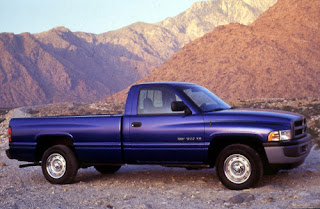Why Chrysler’s New Consumer Advisory Board Won’t Work
By Chris Haak
01.25.2008
Deborah Meyer, Chrysler’s head of marketing (whom the automaker recruited from Lexus last year) announced yesterday several product-related initiatives.
First, more Chrysler vehicles will offer extra features without extra cost to improve Chrysler’s value message. Changes include things such as adding Stow ‘n Go seats to the entry-level Dodge Caravan, 17 inch wheels on the Charger, and more. The goal with these changes is to simplify both the ordering and the manufacturing process for Chrysler vehicles. These changes are a good idea, as long as they are accompanied by the previously-reported interior improvements to vehicles like the Sebring and Avenger. Since many of Chrysler’s current lineup is not class-leading, it’s important that they at least can share a message of features, content, and value with potential consumers.
Their second initiative – establishing online Consumer Advisory Boards of up to 2,000 consumers total – may sound like a good idea at first glance, but I really don’t think it will work. The theory behind them is to give Chrysler immediate feedback on products and marketing. Since the Dodge brand is currently heavily tilted toward the male side of the spectrum, one of the first panels convened will be a group of young female Dodge customers in an attempt to broaden that brand’s demographic.
 Here’s why I don’t believe this idea will work: when Chrysler has been at its best, it has had polarizing products. The 1994 Ram pickup – one of Chrysler’s biggest hits of the past 15 years – eschewed the conservative style of its virtually ignored predecessor and established Dodge’s pickups as the toughest-looking full-size pickups on the market. Many potential buyers hated them, but many loved them, and sales exploded. I don’t know what kind of clinic work was done for the 1994 Ram, but I’m guessing that the objective was to actually have a polarizing style, rather than something benign that most folks found inoffensive (and also unexciting).
Here’s why I don’t believe this idea will work: when Chrysler has been at its best, it has had polarizing products. The 1994 Ram pickup – one of Chrysler’s biggest hits of the past 15 years – eschewed the conservative style of its virtually ignored predecessor and established Dodge’s pickups as the toughest-looking full-size pickups on the market. Many potential buyers hated them, but many loved them, and sales exploded. I don’t know what kind of clinic work was done for the 1994 Ram, but I’m guessing that the objective was to actually have a polarizing style, rather than something benign that most folks found inoffensive (and also unexciting).
 Think of another, more recent, Chrysler product hit: the 300 sedan. Again, polarizing styling, not attempting to be all things to all people. Ironically, compare the Chrysler 300 with the Ford Five Hundred, which competes for many of the same customers and was launched at nearly the same time.
Think of another, more recent, Chrysler product hit: the 300 sedan. Again, polarizing styling, not attempting to be all things to all people. Ironically, compare the Chrysler 300 with the Ford Five Hundred, which competes for many of the same customers and was launched at nearly the same time.  The Five Hundred was a handsome automobile, but its Novacain-influenced styling didn’t get anyone’s blood flowing. Nobody said the car was ugly, but few people wanted to buy a giant, underpowered version of the Audi A6.
The Five Hundred was a handsome automobile, but its Novacain-influenced styling didn’t get anyone’s blood flowing. Nobody said the car was ugly, but few people wanted to buy a giant, underpowered version of the Audi A6.
On top of these examples, I recall Ed Welburn, GM’s VP for global design speaking about the well-received Cadillac CTS Coupe Concept. He said that the car was never shown to customers in clinics; consequently, the car was not neutered and was shown to the public exactly as its designers intended. Some people who saw the car felt that the decklid was too short, or some other part needed work, but the overall reaction was positive.
The bottom line is, while soliciting customer feedback is important, many marketing people will tell you that the consumer has no idea what he wants – especially when you ask him.
COPYRIGHT Full Metal Autos – All Rights Reserved




